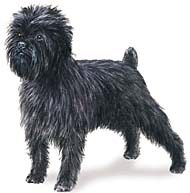
There are options if you are know what are small dogs that don’t shed
Many dog owners don?t want a large dog because they don?t have the space to accommodate a big pooch or don?t feel as though they are up to manhandling a brute. Some people prefer small dogs and, better yet, particularly those that don?t shed.
A non-shedding dog makes life easier for its owner, who does not have to run around behind him with a Dust-buster, cleaning up his fur debris. This type of dog is also excellent for those who have allergies.
Actually, all dogs shed to a degree except for the hairless breeds. ?Non-shedding? is something of a misnomer. However, some dogs shed very little. Shih Tzu is a small dog that is considered non-shedding even though they have long hair. Other small dogs that are considered non-shedding include Bichon Frise and Maltese. The Maltese has one coat and was bred to be decorative rather functional.
Other small non-shedding dogs include the West Highland White Terrier, Yorkshire Terrier, Cairn Terrier, Border Terrier, Italian Greyhound, miniature poodle, Silky Terrier, Norfolk Terrier, Miniature Schnauzer, Havanese, Boston Terrier, Welsh Terrier, Chinese Crested, Scottish Terrier and Australian Terrier. A lot of terriers are either low shedding or non-shedding.
The monkey terrier is officially known as the Affenpinscher and is a wonderful dog for humans that suffer from allergies. This dog is approximately eight pounds.
~
There are hairless dogs, such as the Chinese Crested, American Hairless Terrier, Peruvian Inca Orchid, Hairless Khla and Xolotcuintli. Hairless dogs and cats have virtually no body hair or dander. Those people with allergies who cannot be around terriers or poodles or Bichons can tolerate hairless dogs.
When trying to find a ?non-shedding? dog look for one that is single coated, which is more important than whether the dog is wire-haired, long-haired or short-haired.
A single-coat means that there is no undercoat. The hair is pretty much even all over and there is very little shredding. A double coat means the dog has two coats and sheds more. When a dog has a double coat, the inner layer of hair is usually finer and shorter than the outer coat. The outer coat consists of guard hairs. The undercoat may be thin or thick depending on the dog and either downy or thin.
When a dog is indigenous to a hot climate, such as the Afghan hound, it is likely to have only one coat or a single coat.
There are many kinds of dog coats, including those that are short, medium or long. Some coats are oily, some dense. Some have fur that lies close to their skin and is hard, while others have wavy coats. Hair can be curly, wiry or straight. The most common type of coat is the straight coat. Terriers often have wire coats, and that means that the outer layer of hair is kinked and coarse.
Dogs that have been bred to retrieve game from water have oily, curly coats that can be either harsh or soft depending on the breed of the dog.
Non-shedding dogs are sometimes referred to as hypoallergenic dogs and are sought out by humans who have allergies. A non-shedding dog that is hypoallergenic does not pass dander or hair onto the furniture or to a human?s clothing or into the air.
If a non-shedding dog starts shedding this may indicate that he has fleas or an allergy of some kind that is bothering his skin.
Some non-shedding dogs are not easy to groom because they have long coats, such as the Bichon Frise, Lhasa Apso and Maltese.
